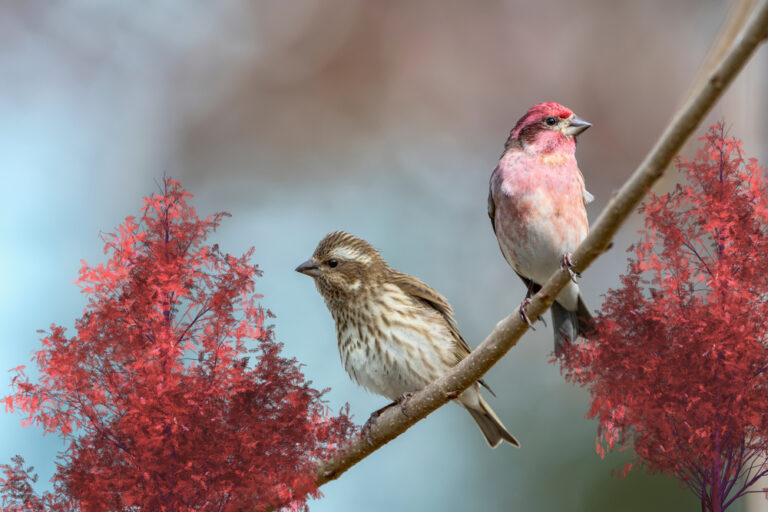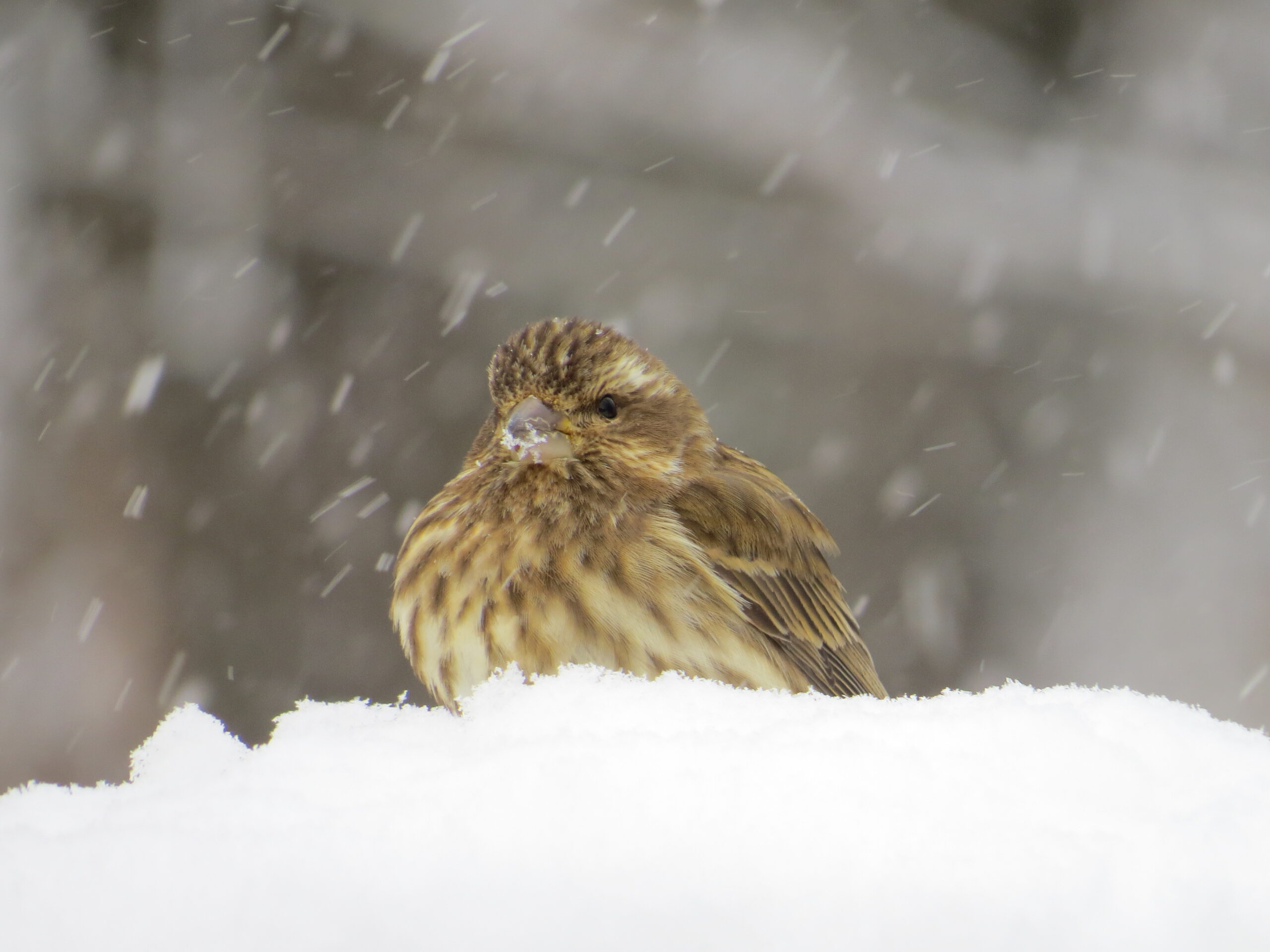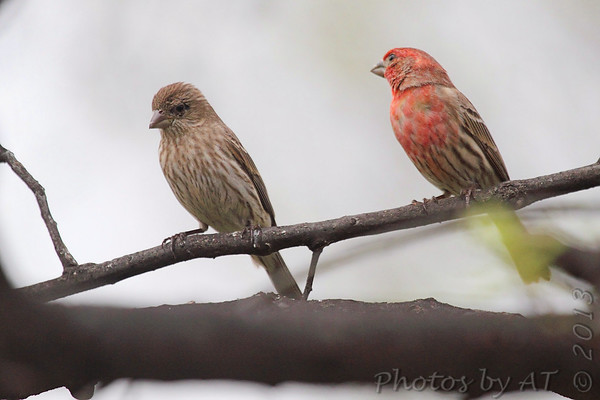
Purple Finch, Haemorhous purpureus
Bill Rowe
If you are walking the woods any time from October to April, watch for plump little birds giving a high sharp pik note as they fly over, or quietly feeding on seeds in the crown of a sycamore, sweetgum, or ash tree. These are probably Purple Finches, fairly common nesting birds in the forests of Canada and the northeastern and north-central states that come down to us with the advent of cooler weather in the fall, some passing on through to more southerly states and others staying with us for the winter. Their movements may be driven partly by food supply up north, and so some years they may be scarce in Missouri simply because they didn’t need to come this far. They do attend feeders, most often for people who live near the woods but sometimes in the suburbs, and they may easily be confused with our ubiquitous House Finches; see Identification. While these two are close relatives (they belong to the same genus, Haemorhous), the Purple Finch has a still closer cousin in the Cassin’s Finch, which replaces it in the Rockies and other western mountains—until you get out to California and the Pacific northwest, where Purple Finches reappear in the form of a different subspecies, with subtle distinctions from the eastern birds.
IDENTIFICATION: Purple Finches are chunky birds with a rather short, notched tail and a stout conical bill; House Finches are a bit slimmer-looking with a longer tail. The adult male Purple Finch wears an all-over magenta or raspberry color that continues down its sides in pinkish “brushstrokes,” while the male House Finch has more restricted patches of red on the head, breast, and rump, with heavy brown streaking down the sides, an infallible mark. The female Purple Finch (and the young male as well) is all brown and streaked below but has a bold head pattern, with a white eyebrow and white “jaw line” enclosing a brown cheek patch, whereas the female House Finch has a plain brown head with fine streaking and no obvious pattern. Separation from the Cassin’s Finch is trickier, but that species has never been recorded in Missouri.
ST. LOUIS STATUS: Fairly common as a migrant, less so as a winter resident but usually around somewhere; numbers will vary from year to year. By watching the House Finches at your feeders carefully, you may pick out this unobtrusive visitor.
Learn more and listen to Purple Finch songs and call notes here.


Female at winter feeder
Photo Credit: Bill Rowe
House Finches for comparison; see Identification.
Photo Credit: Al Smith




